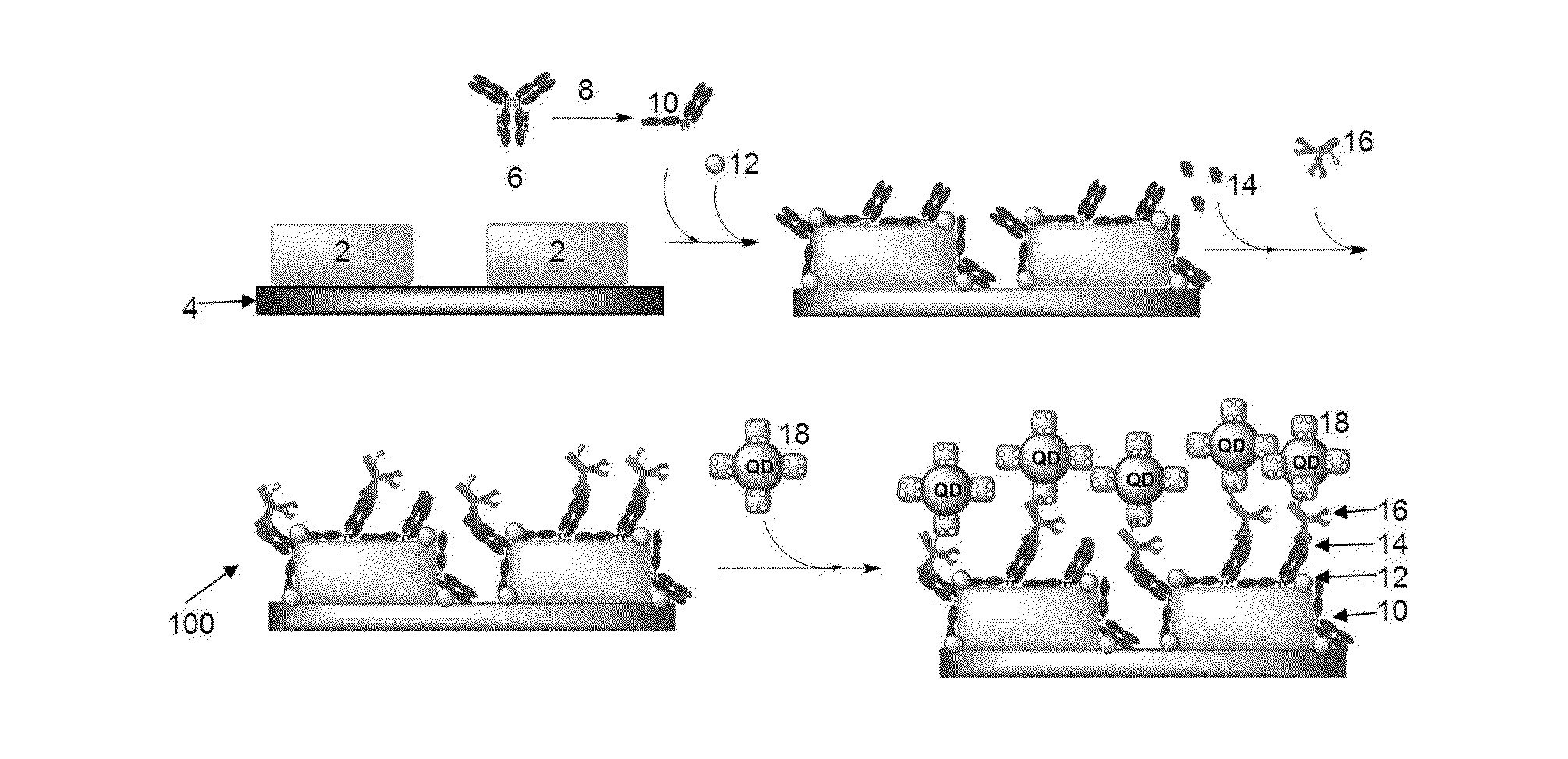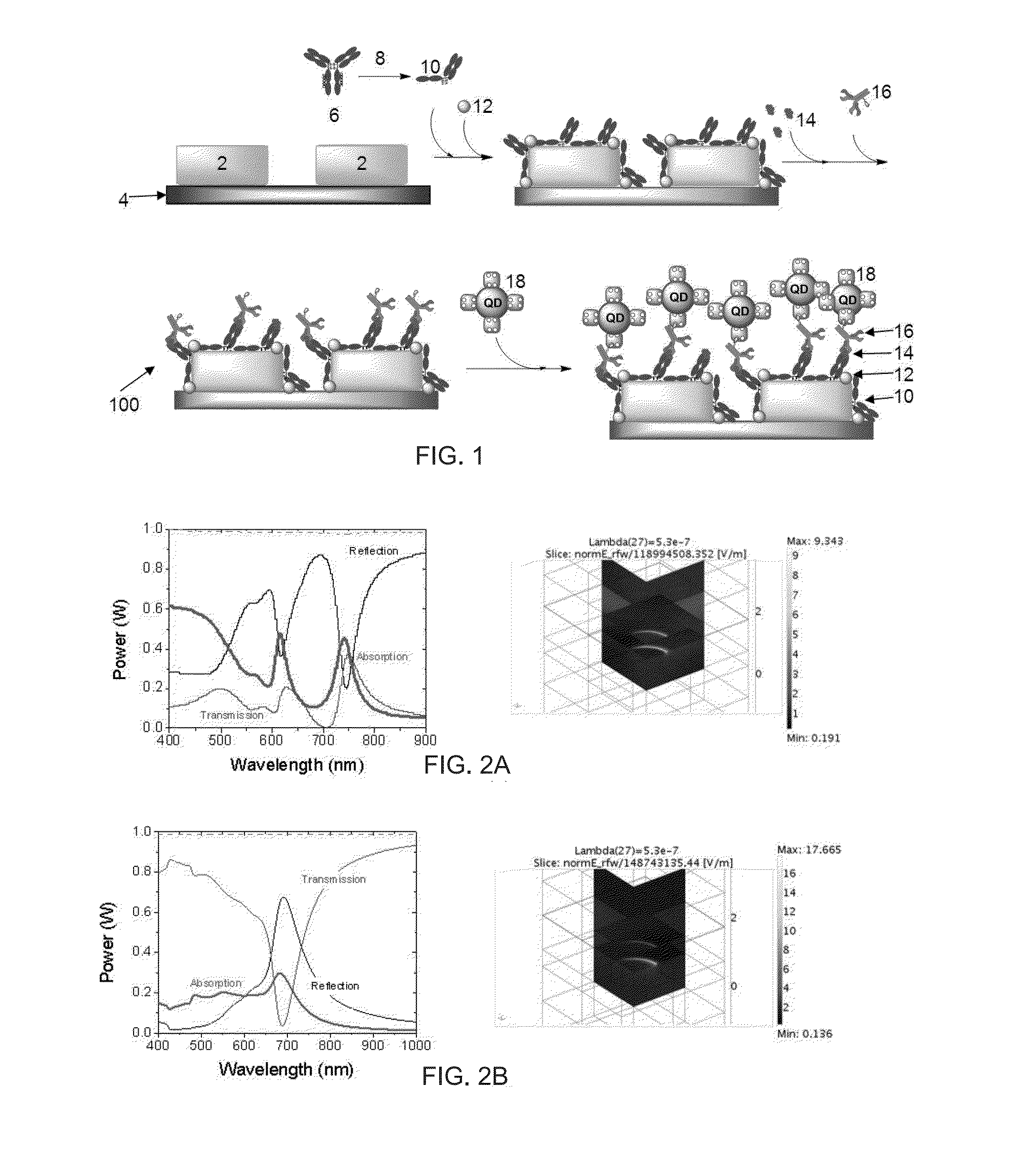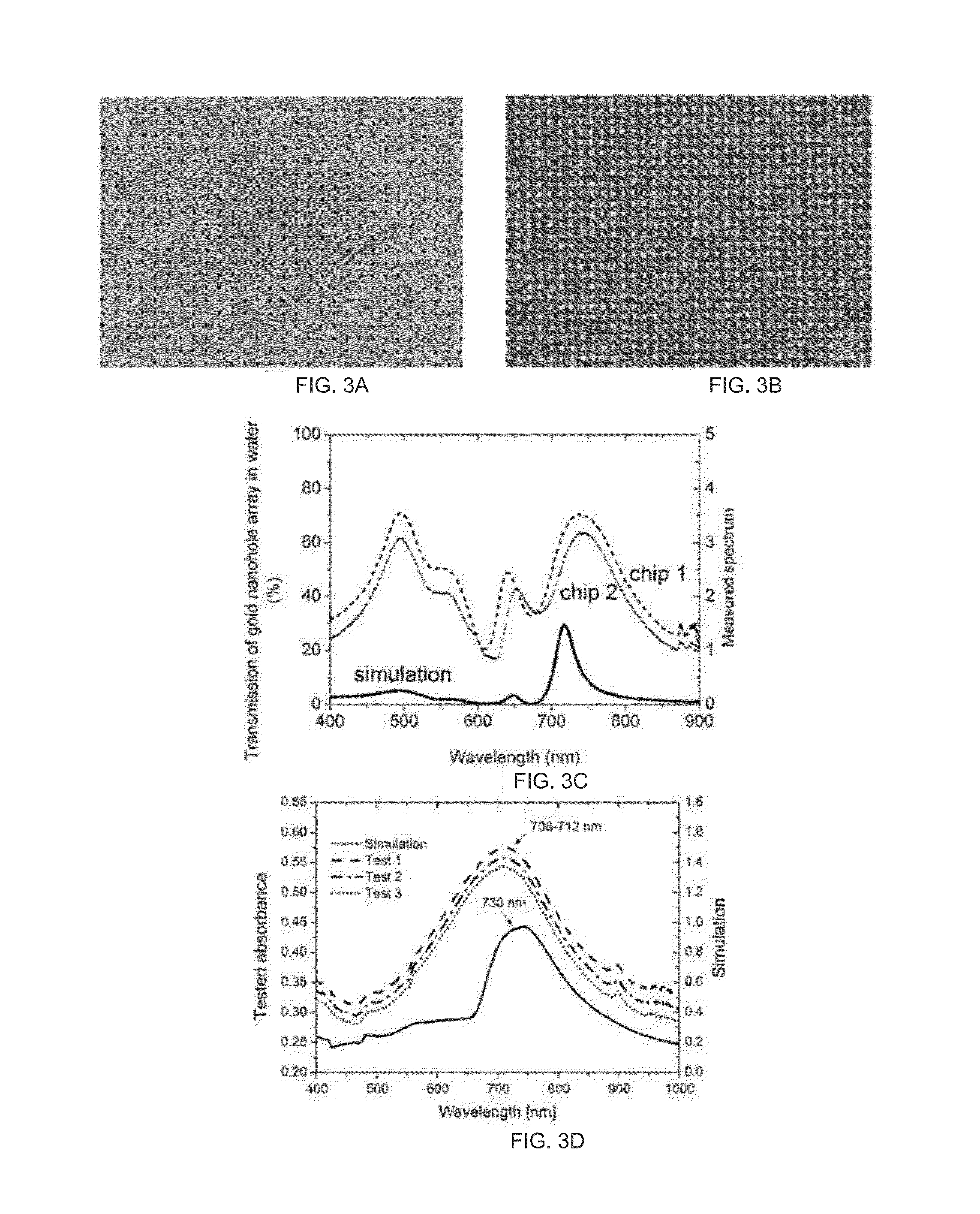Method for detecting a target analyte
a target analyte and detection method technology, applied in the field of detecting a target analyte, can solve the problems of not easily portable and expensive, complicated system of Kretschmann, and inability to detect the system, so as to achieve the effect of increasing the fluorescence emitted
- Summary
- Abstract
- Description
- Claims
- Application Information
AI Technical Summary
Benefits of technology
Problems solved by technology
Method used
Image
Examples
example 1
Nanostructure Design, Fabrication and Characterization
Nanostructure Design:
[0120]Here, two types of exemplary gold nanostructure arrays were designed and simulated through the COMSOL software, which is based on the finite element method to provide total plasmonic field information, including the reflection, transmission and absorption light intensity as well as the plasmonic near-field distribution around the gold nanostructures at each wavelength. The objective of the plasmonic nanostructure design is to maximize the quantum dot (QD) photoluminescence by the electromagnetic enhancement of the plasmonic resonances. For the gold nanostructure array, only a unit cell composed of one gold nanostructure embedded in a square whose length equals to the array pitch needs to be calculated. In the cases of round or square gold nanostructures, only a quarter of the unit cell was simulated due to the geometrical symmetry.
[0121]In the simulation, the frequency-dependent dielectric function of g...
example 2
Biofunctionalization of Nanostructures
[0132]Materials: Purified human prostate specific antigen (PSA), PSA monoclonal capture antibody G3D6 (cAb) and PSA monoclonal detection antibody G1E3 (dAb) were purchased from BBI Solutions (of Sittingbourne, UK). Qdot® 655 streptavidin conjugate (QD-655) and NHS-PEG4-biotin were purchased from Life Technologies (of Singapore). BSA was purchased from Sigma-Aldrich (of Singapore).
[0133]HEPES buffer (10 mM HEPES, 150 mM NaCl, prepared) was used as dilution buffer for PSA antibody immobilization; HBS buffer (HEPES, with 3.4 mM EDTA, 0.05% P20) was used as binding buffer for PSA detection.
Reduction of Capture Anti-PSA (cAb) with TCEP:
[0134]TCEP solution was prepared at 50 mM (2.5 mg dissolved in 174 μL of water), and diluted to 250 μM. 5 μL of the diluted TCEP solution was added to 50 μL of the PSA antibody in PBS (1.26 mg / ml, 8.4 μM) and incubated at room temperature for 30 minutes. After reaction, the mixture was purified by G25 column. The purif...
example 3
Bioassay Performance
Gold Nanohole Array:
[0148]As shown in the typical fluorescence images of gold nanohole array with quantum dot bioassay in FIGS. 7(a) and 7(b) (for 100 ms of fluorescence integration time) and FIG. 8 (for 20 ms of the integration time), the inside gold nanohole area showed much stronger fluorescence emission than the outside gold film, due to the plasmonic enhancement provided by the gold nanoholes. The fluorescence difference between outside and inside reduced with the PSA concentration reduction. As shown in FIGS. 8(a) and 8(b), 100 ng / ml of PSA induced fluorescence showed significant difference between gold nanohole area and its outside. When the PSA concentration reached 1 ng / ml (FIG. 8(d)), the fluorescence induced by quantum dots was hard to be discerned. In the control experiment (a gold nanohole array chip but with no PSA added in the sandwich assay), the image was totally dark, which means very low non-specific binding in this quantum dot bioassay.
[0149]I...
PUM
 Login to View More
Login to View More Abstract
Description
Claims
Application Information
 Login to View More
Login to View More - R&D
- Intellectual Property
- Life Sciences
- Materials
- Tech Scout
- Unparalleled Data Quality
- Higher Quality Content
- 60% Fewer Hallucinations
Browse by: Latest US Patents, China's latest patents, Technical Efficacy Thesaurus, Application Domain, Technology Topic, Popular Technical Reports.
© 2025 PatSnap. All rights reserved.Legal|Privacy policy|Modern Slavery Act Transparency Statement|Sitemap|About US| Contact US: help@patsnap.com



